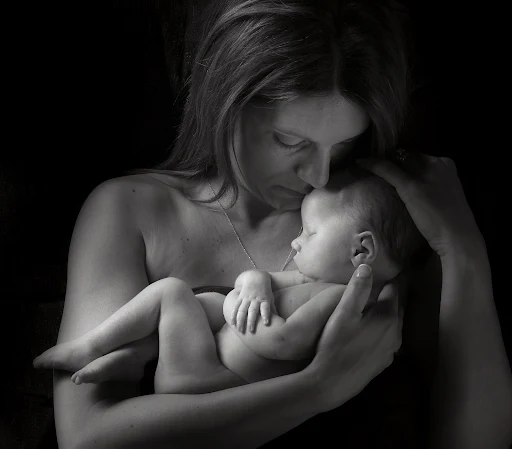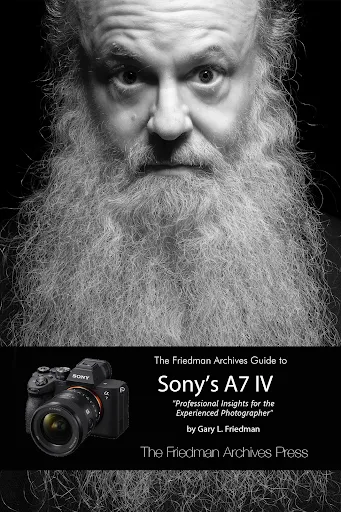Also in this issue:
- Remembrance Photography
- Sony A7 IV book is out!
- Lecture for the Royal Photographic Society
- Geeking with Gary: Google Bricks their own Product
Remembrance Photography
If you've been following my blog in the past year, you'll know I've been searching for more meaning in photography beyond mere pretty pictures. What's worth doing? Why take pictures? In the upcoming issue of Cameracraft magazine, I profile organizations that offer bereavement portraits at no cost to families who have lost or are losing a baby. Losing a child at any stage, whether this be through miscarriage, stillbirth, neonatal or infant death or of any age is one of the most traumatic experiences any one can go through. And they have a large network of volunteers in both the U.S. and U.K. It’s rare that a portrait photographer has an opportunity to make such a lasting and profound impact in a family’s life. And I can tell you that these portraits become the families' most treasured asset.
In the article I interview program participants, and what the training is like, and what it's like to do this kind of work. But even if you don't subscribe, I encourage you to email me a for a copy of the article, and also check out the two organizations mentioned in the article:
USA: Now I Lay Me Down To Sleep https://www.nowilaymedowntosleep.org/
UK: Remember my Baby https://remembermybaby.org.uk
I'm considering becoming a volunteer myself as I contemplate retirement.
Guaranteed there's one feature I talk about that no other online reviewer has mentioned so far. Find out which one it is in my new, ridiculously-thorough 745-page ebook on the Sony Alpha 7 IV! :-)
(Nice beard, eh?)
Zoom Lecture for the Royal Photographic Society - Join us!
Once upon a time, photographers had to make sure that the dynamic range of their subjects fit within the range of light that the sensor could capture. Usually this meant using fill-flash of some sort to lighten the shadows and make things look just as good as it looked to your eye. (But you had to be clever to make it look like you weren't using a flash. In my case that meant a diffuser and underexposing by -1.7 stops, like in the example to the right.)Today's smartphones do that for us without needing any fancy knowledge of dynamic range or fill light. Someone finally figured out how our brains perceive a scene and they made it look like it does to our eyes. An experienced photographer would have to shoot RAW and spend time post-processing to get good looking results in bad light. Smartphone users get the same result right away (and usually post it right away, too, much to the chagrin of the adjacent photographer with the bigger camera!) (Click on example below to view larger and sharper.)
This is just one of many examples I'll be giving in my online Zoom talk, commissioned by the UK's Royal Photographic Society, entitled "Computational Photography: How our Smartphones are Beating the Big Cameras". You can attend too! Here's the blurb from their website:We are entering a new era in photography, one in which "lowly" smartphones are taking pictures that look as good as if you had shot in RAW and post-processed. Sure, nothing beats a big camera for image quality, resolution, and control, but for everyday use normal people are getting great results without any knowledge and without spending time at the computer. What tricks are the smartphone manufacturers using that the big camera companies aren't? How do they get great results in Night View mode without needing a tripod? Why do they create a 3D map of the image in the phone? And how quickly might your traditional big camera become obsolete?
In this talk, renowned photographer and writer Gary Friedman (of FriedmanArchives.com) explains the clever secrets being employed behind the scenes, and offers impressive examples demonstrating that the quality gap between smartphones and traditional cameras continues to shrink.
The lecture will be on Saturday, March 12th at 4PM London time. The event is free for RPS members and a scant £3 GBP (about $4 US Dollars) for non-members. You can attend this lecture by signing up here: https://rps.org/digonline30 Learn about the future! And hope to see you there!
Zoom Lectures for Photo Clubs
These lectures are keeping me busy and camera clubs keep asking me back to talk about different subjects. I can energize your photo club too! More info here.
Google Bricks Their Own Product
Back in 2020 I raved about my new Google Nest Wi-Fi Mesh network, which was wonderfully fast and provided me rock-solid streaming capability for 16 months -- always on, never needed rebooting no matter how much data I ran through them.
Then in September 2021 Google forced an over-the-air update which killed their reliability - individual pucks would go on and off at random. I can't give zoom lectures with this kind of poor reliability! Google knew about it, promised a fix but nothing came. (Google makes great products but they suck at maintaining them.) So I was forced to sell the whole kit to someone with less stringent needs and bought 3 Eero Pro 6's. So far, so good. But I hate Google for needlessly bricking my investment.









I just purchased your A7IV book. Skimmed through it - looks great. These cameras are continuing to get more complicated (and more powerful). Your book for various Sony cameras are invaluable.
ReplyDeleteThey are getting more complex - Recently I thumbed through a copy of my book for the Sony Alpha 900, which was exponentially less complex. Glad you like the books - tell the world! :-)
DeleteLove your Sony books. I have them for my A6000 and A6600. Preordered your A7 IV book as I think I will treat myself with this camera.
ReplyDeleteDo you think Sony will invest more in their APS-C line and develop a successor to the A6600?
I've followed your blog for years. It's still as helpful and informative as ever. You have definitely become the go-to resource for photography. Thank you.
ReplyDeleteWireless networks :(
ReplyDeleteI'm using commercial wifi at home, Omada in the house and Cisco aironet in the shed and getting solid performance everywhere, 97 down, 38 up, the full bandwidth available from the ISP.
Overkill for home but utterly bulletproof. Nonetheless, wired is always better.
I've been a long time follower, bought your ebook for the A700 long ago. I'm still using the A700's as well, what can I say, I'm a trailing edge kind of guy.
On a separate topic I've just "upgraded" to an A99 and with it the new flashfoot. After a bit of head scratching I've invested in Godox owing to its price/performance compared to Sony and it seems to be the way many Sony users are going these days. I still have a couple of 42AM flashes but the adapter is unavailable these days.
I'd be interested in any views you might have on whether the premium for the Sony flash system is justified in an upcoming blog.
The Godox flashes represent a great value (I own several and love them), but the Sony flashes are more solid around the edges - fewer incidents of missed triggering, does High Speed Sync with less banding, and the flash tubes don't fail at seemingly random times.
DeleteGary I have your e-books on A77M2 and A99M2. A young friend recently acquired a 2nd hand A200. I tried to find the ebook but that section of your website didnt seem to be working. Is it still around?
ReplyDeleteHaggisbasher, if you haven’t found it yet and it’s still topical: https://friedmanarchives.com/sony-alpha-200/
Delete